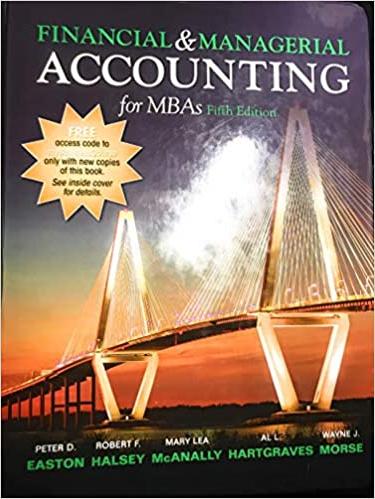Semester Case - Cowboy Ice Cream, Inc. During times when CIC sells relatively few units, W.T. believes they could instead offer custom ice cream parties for birthdays and other events. Such parties would only be available during the slowest operating times. For example, over lunchtime (for office parties) and in the afternoons and evenings, Monday- Wednesday. During those times, the truck typically averages sales of 8 bars per hour at $4.00 each. Based on requests received to date, W.T. believes there would be interest in parties providing ice cream for one hour for 25 people for no more than $100 ($4 per person). For these parties, CIC would provide five cartons of ice cream with a selection of toppings. CIC would pick up the cartons of ice cream directly from the cold storage facility. Cost of the toppings would average $12 for each party and cost of paper goods for the party would average $7 per party. (a) Based on the normal operation of the truck, which costs are relevant to the decision of whether or not to offer these parties (b) Should CIC offer these parties at $100 each A local business owner has expressed interest in buying W.L.'s share of CIC. As you'll recall, W.T. has invested $25,000 in the business. For the next few years, W.T. expects to average a salary of $15,000 per year by managing CIC. generally only working more than 20 hours per week in the summer months. The businessperson has offered to pay W.T. $30,000 for his interest in the company and all shareholders agree that W.T. would still manage the company and earn an average salary of $27,300 per year. However, he will be required to work 35 hours per week throughout the year. If W.T. sells his interest in CIC, he will invest it and earn a 5% retur. (a) Determine the opportunity cost to W.T. of retaining his interest in CIC. (b) Based solely on financial considerations, should W.T. sell his interest in the business and retain his position as manager? (c) Discuss the qualitative as well as quantitative factors that W.T. should consider E13-11 (modified) Levesque Company makes and sells lawn mowers for which it currently makes the engines. It has an opportunity to purchase the engines from a reliable manufacturer for $60 each. The annual costs of making the engines are shown here. Cost of materials (20,000 units x $26) $ 520,000 Labor (20,000 units x $20) 400,000 Depreciation on manufacturing 42,000 equipment Salary of supervisor of engine 85,000 production Rental cost of equipment used to 23.000 make engines Allocated portion of corporate-level 80,000 facility-sustaining costs Total cost to make 20,000 engines $1,150,000 *The equipment has a book value of $90,000 but is market value is zero. Required: a. Should Levesque continue to make the engines b. Levesque could lease the space currently used in the manufacturing process. If leasing would produce $300,000 per year, would your answer to requirement a be different E13-20 Kahn Company paid $240,000 to purchase a machine on January 1, 2017. During 2019, a technological breakthrough resulted in the development of a new machine that costs $300,000. The old machine costs $100,000 per year to operate, but the new machine could be operated for only $36,000 per year. The new machine, which will be available for delivery on January 1, 2019, has an expected useful life of four years. The old machine is more durable and is expected to have a remaining useful life of four years. The current market value of the old machine is $80,000. The expected salvage value of both machines is zero. Required: Based on this information, recommend whether to replace the machine. Support your recommendation with appropriate computations










